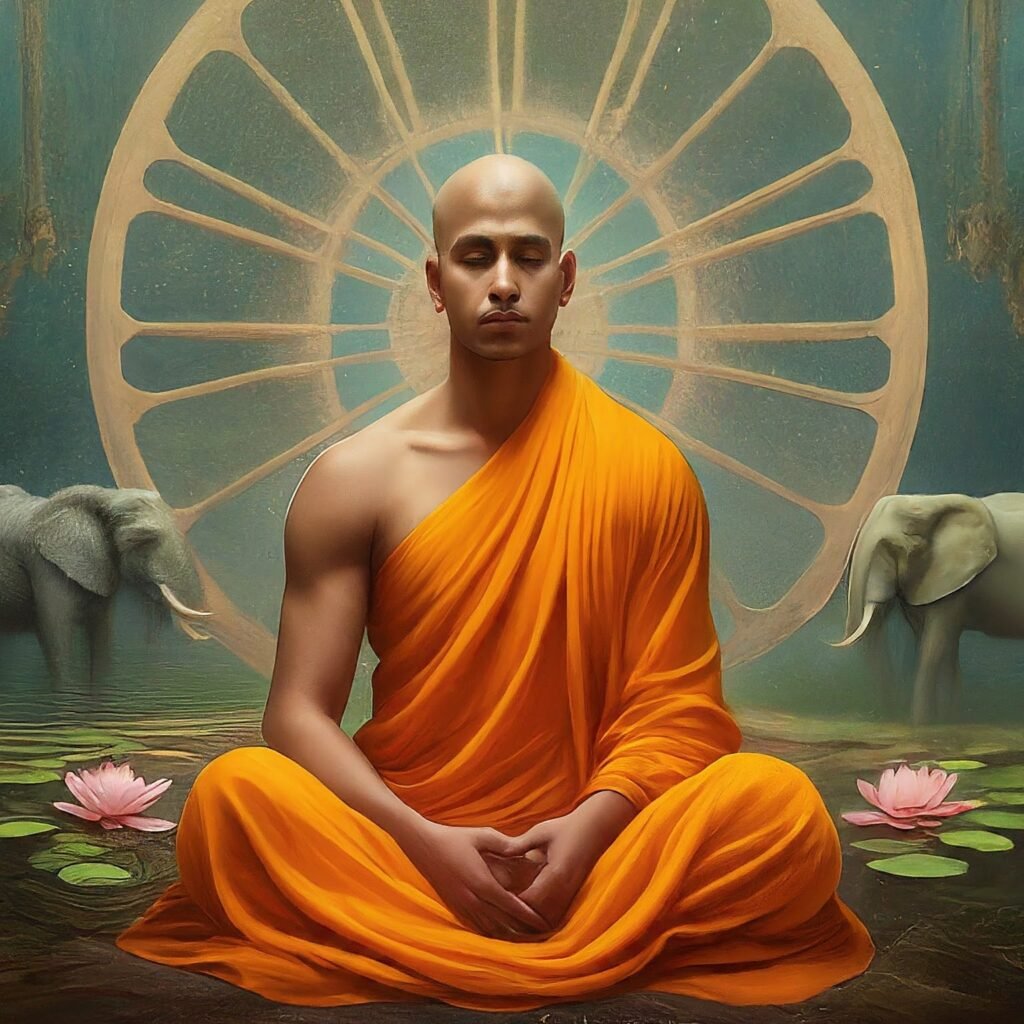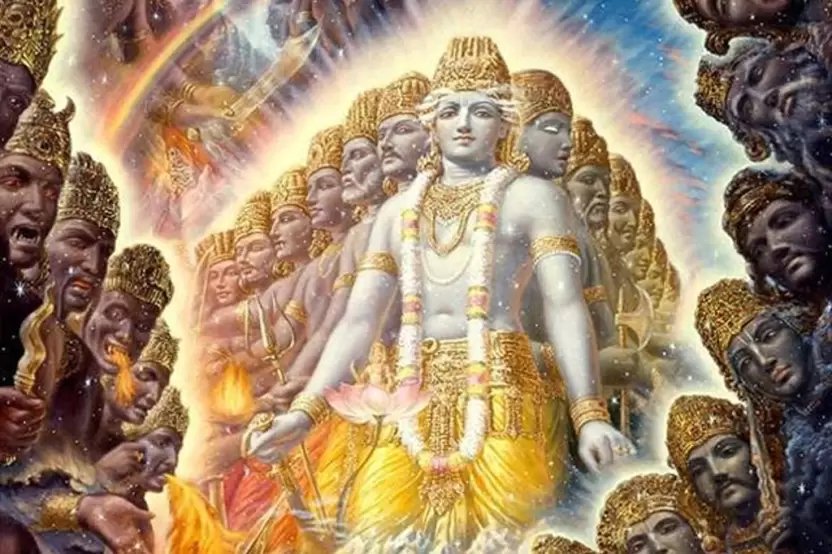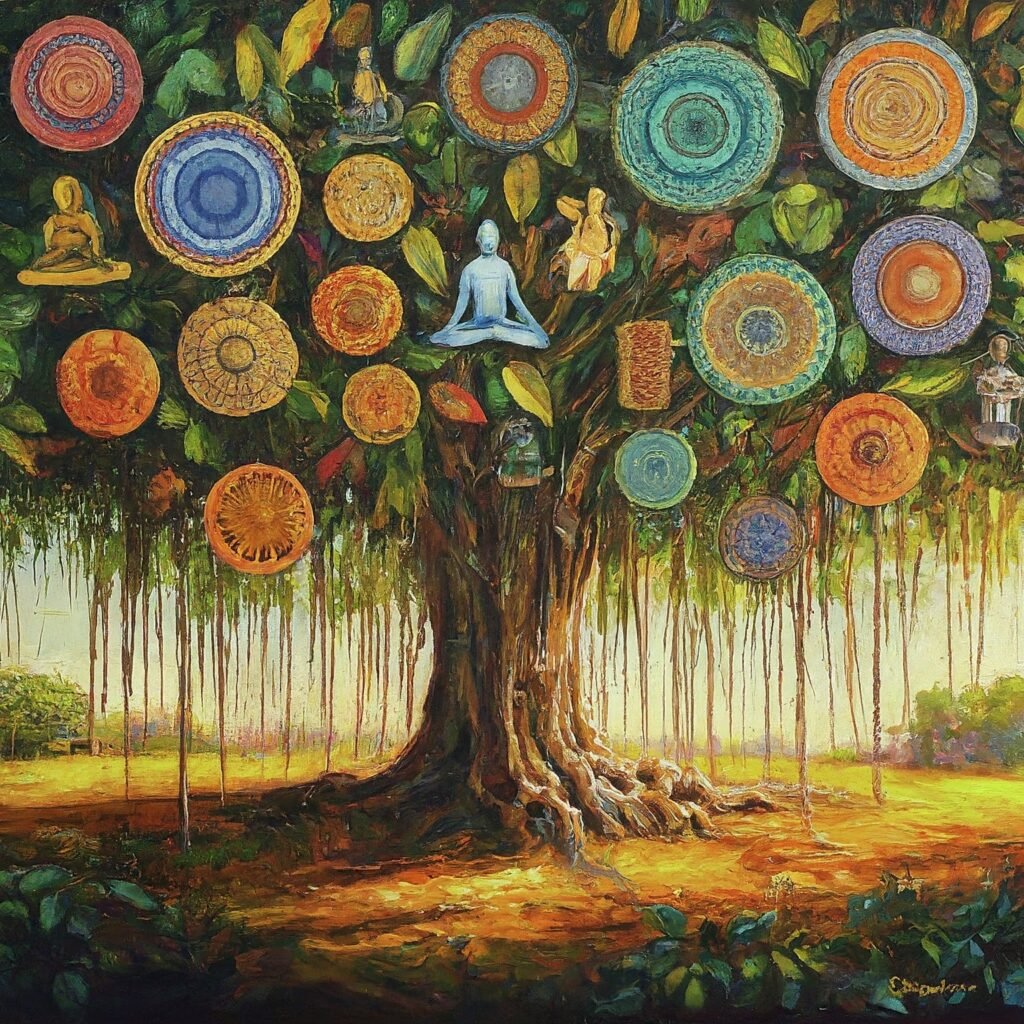Hinduism may be compared to a fully-grown banyan tree. It’s a religion brimming with life and diversity. Unlike any other religion, it stands as a unique entity with its roots deeply embedded in history. As we delve into the heart of this symbolic tree, we discover the intricate branches of the Shramana and Sanatana traditions, each contributing to the richness of Hinduism.

The Banyan Tree Symbolism
The banyan tree serves as a powerful metaphor for Hinduism. Its age signifies the deep-rooted history, and its significance lies in the multitude of branches that have grown into independent trees, yet interconnected by a common central trunk. Hinduism, much like this majestic tree, has matured into a complete jungle of traditions.
The Core

At the core of Hinduism lies a profound duality—the Shramana and Sanatana traditions. Emerging from the same roots, they have blossomed into distinct entities while retaining their unique identities. This duality forms the essence of Hinduism, where unity coexists with diversity.
TheShramana Roots

The Shramana tradition, represented by figures like Buddha and Jina – The Mahavira, has contributed significantly to the fabric of Hinduism. Though emerging from the same soil as the Sanatana tradition, Shramana has maintained its distinctiveness, spreading its fragrance globally through the followers of Buddha and Jina.
The Sanatana Roots

The Sanatana tradition has given birth to pillars of Hindu philosophy—the Vedas, Upanishads, Yoga, and Tantra. These foundational elements have played a crucial role in shaping the spiritual landscape of Hinduism, becoming the hallmark of its identity.
Hinduism – Working Example of Pluralism
What makes Hinduism unique is its ability to maintain unity despite diversity. Both Shramana and Sanatana, like intertwined branches, contribute to the overall richness of Hinduism. The shared roots and common essence serve as a unifying force, allowing diverse traditions to coexist harmoniously.
The Sanata Gems
Much like the banyan tree’s sprawling branches, Hinduism has grown into a vast jungle of traditions. The diversity within Hinduism is akin to a rich tapestry, with each tradition adding a unique thread to the spiritual fabric. This blossoming reflects the resilience and adaptability of Hinduism since eternity.
The Vedas and Upanishads
Diving into the core, we encounter the Vedas and Upanishads—the intellectual pillars of Hinduism. These sacred texts provide profound insights into spiritual knowledge, guiding practitioners on the path of self-realization. While Vedas deal with material benefits and progression of mankind, Upanishads, also called Vedant (ending portion of vedas) elevate into higher levels of human consciousness and soul and converge towards the very essence of the Shramana school of thought..
Yoga and Tantra
Integral to Hindu spiritual practices are Yoga and Tantra. These disciplines offer practical methods for attaining spiritual enlightenment, contributing to the holistic development of individuals. The banyan tree of Hinduism draws strength from the deep roots of these transformative practices.
The Shramana Gems
Buddha and Jina, emerging from the Shramana tradition, have become iconic figures in Indian spirituality. Their teachings and practices have left an indelible mark, shaping the way millions approach the spiritual journey. The fragrance of their wisdom has spread far and wide, influencing cultures beyond India.
Spread of Buddhism and Jainism
The followers of Buddha and Jina played pivotal roles in disseminating their respective traditions globally. Buddhism, in particular, became a global phenomenon, impacting diverse cultures and societies. Jainism, with its commitment to non-violence and compassion, also found resonance in the pre-Christian Jewish Churches of Therapeutae & Essenes to which belonged the legendary John – The Baptist and thus left an undeniable essence to the Christian religion.
The Sanatana and Shramana Relationship

The relationship between Sanatana and Shramana is unique, though on surface, the two philosophies might appear entirely different. It’s because while the best of the gems of Shramana traditions, including Buddha and all the 24 Tirthankaras of Jains, including their immediate followers hailed from the Sanatana societies, and similarly the Sanatana societies always appreciated the Shramana philosophies because they and completely in sync with their own Upanishad wisdom. Thus, despite being distinct paths, both traditions coexist peacefully, influencing each other in subtle ways. This symbiotic relationship showcases the tolerance and acceptance embedded in the fabric of Hindu spirituality.
Conclusion – Working Example of Unity in Diversity
In conclusion, Hinduism, portrayed as a banyan tree, captivates with its complexity and diversity. The intertwined branches of Shramana and Sanatana traditions create a harmonious tapestry, reflecting the beauty of unity amid multiplicity. The banyan tree analogy invites us to appreciate the richness and resilience of Hinduism and the Indic thought.

Pingback: Anatta Unveiled: Harnessing the Power of the Potthapada Sutta's Insights - seekeramit.com
Pingback: Ram Mandir Temple: A Beacon of Cultural and Economic Advancement - seekeramit.com
Beautifully written.
Does a banyan tree have religious and cultural significance, or is it just used as a metaphor here?
Thanks!
Banyan Tree holds immence religious and cultural signifance in HInduism -https://www.onindianpath.com/banyan-tree/
However, here in this article. it was used metaphorically .
Pingback: Buddha and the Concept of Expanding and Contracting Universe - seekeramit.com
Pingback: Israel India Friendship: A Tale of Ancient Bonds and Future Promises - seekeramit.com
Pingback: Christmas and it's Indian Roots - A Casestudy of Cultural Plagiarism - seekeramit.com
Pingback: Maha Kumbh 2025: A Timeless Spiritual Tradition - seekeramit.com